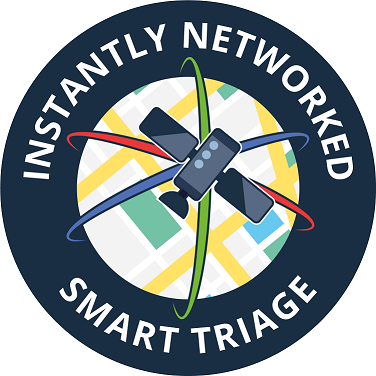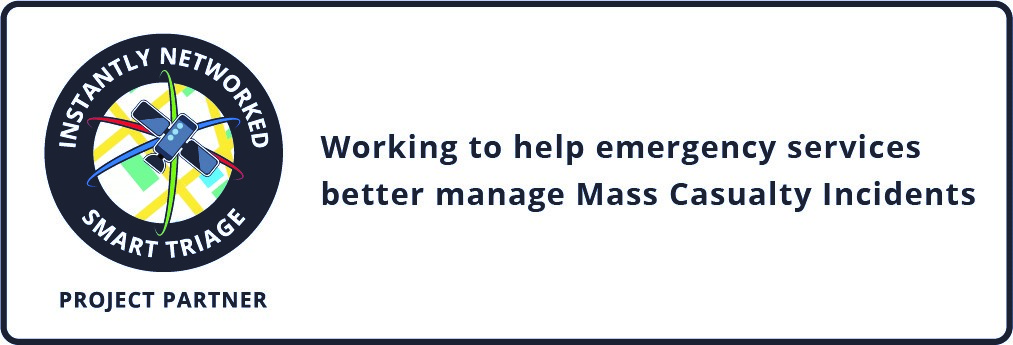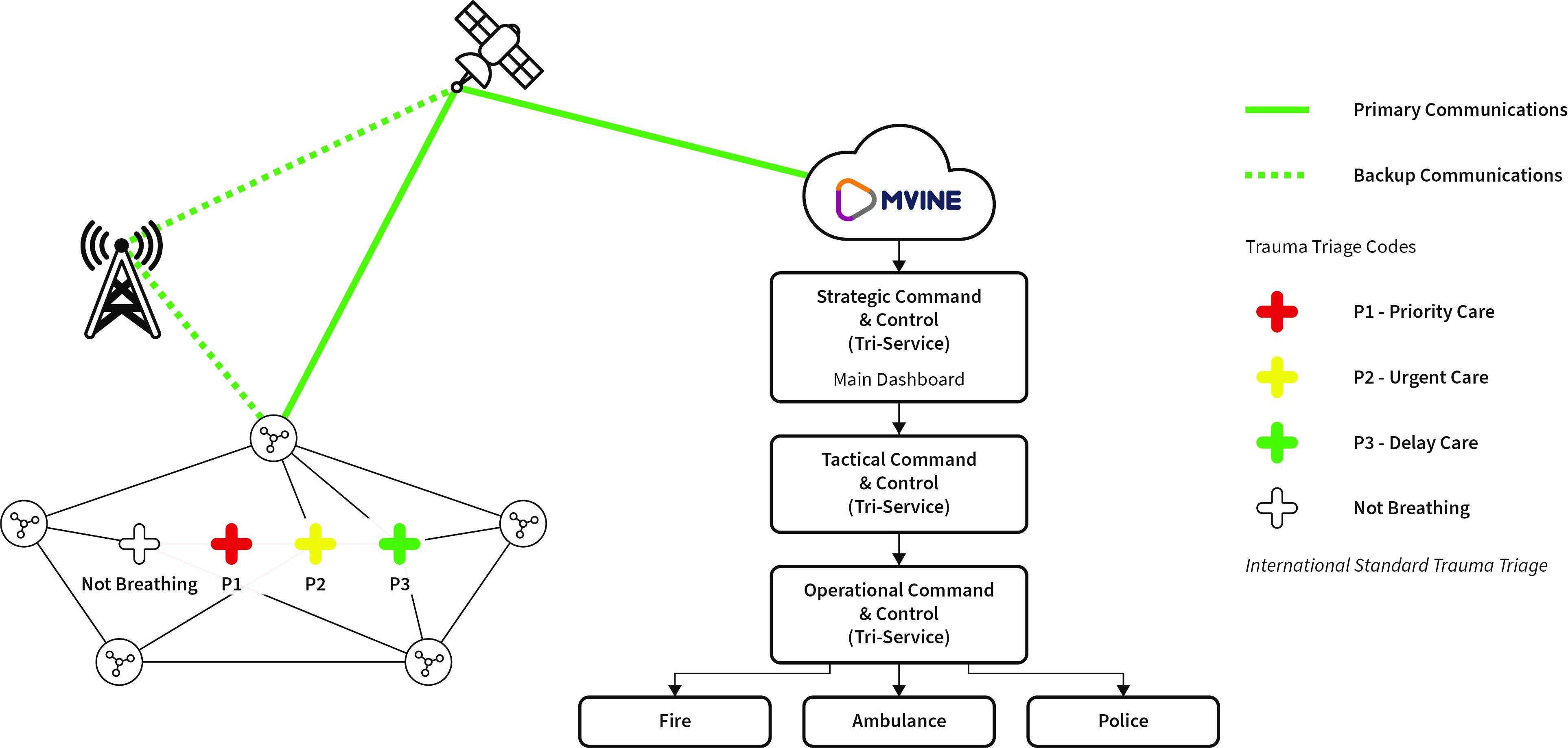
Objectives of the service

The emergency services require new methods for command and control of mass casualty incidents (MCI). For example, where the mass casualty incident is a marauding terrorist firearms attack (MTFA) police, ambulance and fire and rescue services need improved coordination in the strategic, tactical and operational command to preserve life and to keep the public safe. The objective is to provide an accurate representation in the digital realm of what is happening in the physical realm.
Users and their needs
Users comprise emergency services commanders and frontline officers attending a mass casualty incident (MCI). Those commanders and officers are drawn from the 'blue light' services: police; ambulance; fire and rescue services. They include first responders, decision makers at all levels, senior and less senior acting commanders, as well as authorised firearms police officers. Users operating in the 'Hot zone' and 'Warm zone' of a mass casualty incident need to be highly coordinated, better informed and clearly understood. Investigators working after the incident need a full audit trail for use during a public enquiry and other follow-up activities.
Service/ system concept

INST delivers the capability for emergency services commanders and frontline officers attending a mass casualty incident (MCI) to work in a more coordinated way, and to be able to count the number of casualties, to know where those casualties are located and to triage casualties based on the observed health condition of those casualties. INST uses satellite data communications as the core part of an ad-hoc multi-bearer mesh network to stream data in real time to presentation screens in strategic, tactical and operational command. INST records every data point and applies timestamps so that data is fully available, clear and understandable during and after the mass casualty incident.

Space Added Value
Existing and upcoming cross-linked satellite constellations in Low Earth Orbit are used, combined with terrestrial technologies, to form an ad-hoc mesh network for data communications which is instantly available, robust and highly secure in the context of a mass casualty incident. Space assets bring huge added value as terrestrial communication services may be unavailable (e.g. maritime), out of service (e.g. saturated), or no longer functional (e.g. damaged or destroyed in the incident).
Current Status
Currently, the INST project is at the stage of having completed the Factory Acceptance Testing (FAT) milestone in May 2025.
-
The Factory Acceptance Testing (FAT) milestone faced several challenges, including the supply of hardware components, unforeseen resource limitations, and unexpected technical difficulties.
-
The INST team dedicated several days in the space of 6-7 weeks – throughout February and March 2025 – to onsite testing at the Science and Technology Facilities Council (STFC) in Daresbury, where they utilised a functional gateway and multiple INST tags
-
The INST team is presently engaged in talks with three potential locations for the SAT and Pilot demonstration: Salt & Tar music venue, National Cycling Centre Manchester (outdoor velodrome arena), or STFC Daresbury. These discussions are progressing with the aim for a conclusive agreement in May 2025.
Subcontractor(s)







